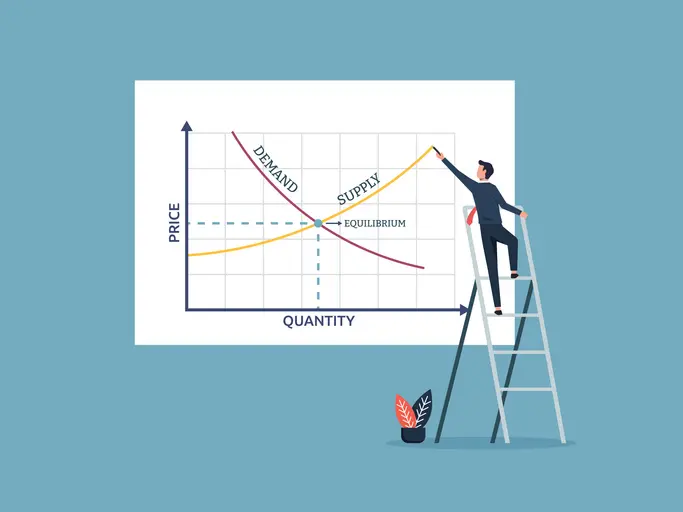There are few things more frustrating for a business owner than the twin demons of inventory mismanagement. On one hand, you have the empty shelf where a best-seller should be, representing lost sales and unhappy customers. On the other, a warehouse packed with overstocked items, tying up precious cash that could be used to grow your business. For years, this has felt like an unavoidable struggle. But today, real-time inventory management offers a modern, powerful solution to finally tame the chaos and take control.
What Is Real-Time Inventory Management?
In simple terms, real-time inventory management is a system where your stock records are updated instantaneously the moment any change occurs. When an item is sold at the register, shipped from the warehouse, moved between locations, or received from a supplier, the central system knows about it immediately.
This is in stark contrast to traditional methods, which are plagued by data lag. Think of manual weekly counts or even nightly batch updates from your sales system. For hours or days at a time, your records don’t match reality. Real-time inventory management eliminates this lag. It provides a single, perpetually accurate view of every item you own, across every single sales channel and physical location.
Why Real-Time Inventory Is a Game-Changer: Key Business Benefits
Adopting this kind of system isn’t just a technical upgrade; it’s a profound strategic move that can transform your business. The benefits are significant and far-reaching.
It starts with enhanced accuracy and visibility. By automating data capture at the source, you drastically reduce the human errors that plague manual entry. Discrepancies between your physical stock and your recorded stock begin to vanish, giving you a level of accuracy you can actually trust. This leads directly to optimized inventory levels. With a crystal-clear view of what you have and where it is, you can minimize carrying costs and free up working capital. You avoid both the lost revenue from costly stockouts and the wasteful expense of overstocking items that don’t sell.
Ultimately, all of this culminates in a dramatically improved customer experience. When your website shows an item is in stock, it actually is. You can make accurate delivery promises and offer services like “buy online, pick up in-store” with confidence. This reliability is what builds customer loyalty in today’s competitive market.
How Real-Time Inventory Systems Work: The Core Technology
A real-time system isn’t a single piece of software; it’s an ecosystem of hardware and software all working in perfect sync. Here are the essential parts.
Data Capture Hardware
These are the tools that “tell” the system about every inventory movement. The most common and cost-effective are barcodes and QR codes, scanned at every touchpoint from receiving to picking to point of sale. For more advanced operations, RFID (Radio-Frequency Identification) tags allow for automated, non-line-of-sight tracking, where an entire pallet of goods can be scanned instantly just by passing through a reader. In some cases, IoT (Internet of Things) sensors are used for high-value assets or to track environmental conditions like temperature for perishable goods.
Centralized Management Software
This is the brain of the entire operation. All the data captured by the hardware flows into a central software platform. This might be a dedicated Inventory Management System (IMS), a more comprehensive Warehouse Management System (WMS), or for larger businesses, it’s often a module within their Enterprise Resource Planning (ERP) system. Whatever its name, its job is to be the single source of truth for all inventory data.
System Integration and Data Syncing
This is where the magic really happens. The central software uses APIs (Application Programming Interfaces) to connect and communicate with all your other business systems. Your Point of Sale (POS) system tells it about an in-store sale the second it happens. Your e-commerce platform, like Shopify or Magento, tells it about an online order. It can even connect to your supplier or third-party logistics (3PL) portals. This seamless integration is what creates that single, unified, and always-up-to-date view of your inventory across the entire supply chain.
A Step-by-Step Guide to Implementing Real-Time Inventory
Making the switch can feel like a massive project, but breaking it down into a clear roadmap makes it manageable and helps you avoid common pitfalls.
Step 1: Assess Your Current Processes and Needs
Before you look at any software, look at your own operations. Map out your existing inventory workflows from receiving to fulfillment. Where are the bottlenecks? Where do inaccuracies creep in? What are your biggest pain points? This critical self-assessment will help you define clear goals for your new system, like “reduce picking errors by 90%” or “eliminate overselling on our website.”
Step 2: Choose the Right Technology Stack
With your goals defined, you can start looking for the right tools. The best choice depends on your business. Consider the type and size of your inventory, the number of sales channels you operate (omnichannel is more complex than a single store), and how easily the new system can integrate with your existing software, like your accounting package or CRM. Always choose a solution that can scale with you as your business grows.
Step 3: Plan for Data Migration and Integration
This is a technical but crucial step. Your new system is useless without accurate data. This starts with a full, physical stock count to ensure your opening inventory numbers are perfect. Then comes the process of connecting the new software to your other systems—POS, e-commerce, and so on. A good vendor will help with this process to ensure the automated data flow is seamless from day one.
Step 4: Train Your Team and Manage Change
A new system is only as good as the people who use it. Don’t underestimate the human element. You need to create clear Standard Operating Procedures (SOPs) for every task, from scanning in new shipments to processing returns. Conduct thorough training for everyone, from the warehouse pickers to the customer service agents who will be relying on the new data.
Overcoming Common Implementation Challenges
It’s wise to go into this with realistic expectations. You may face a few obstacles, but they can all be managed.
The initial investment for software and hardware can seem high, but you must frame it against the long-term ROI from reduced carrying costs, fewer lost sales, and increased efficiency. Integrating with old or custom-built legacy systems can be complex, so factor that into your timeline. If you choose a cloud-based platform, data security is a key consideration, so vet your vendor’s security protocols carefully. Finally, expect some employee resistance to change. The best way to manage this is through clear communication about the benefits (for them and the company) and excellent, hands-on training.
Advanced Strategies for Effective Inventory Management
Once your real-time system is in place, you can leverage its power with advanced inventory methodologies that were difficult or impossible before.
Just-In-Time (JIT) and Lean Inventory
Real-time data is the backbone of a successful JIT strategy. It gives you the confidence to order and receive inventory only as it’s truly needed for production or to fulfill an order. The accuracy of a real-time system makes a lean just in time model a viable way to slash holding costs.
Automated Reorder Points and Safety Stock
Your system can be configured to automatically monitor stock levels and trigger purchase orders the moment inventory hits a pre-defined minimum. This ensures your reorder point is never missed and that your crucial safety stock buffer remains intact to protect against supply chain delays or unexpected demand.
FIFO (First-In, First-Out) and Batch Tracking
For businesses dealing with perishable goods or products with expiration dates, FIFO is critical. A real-time system can enforce the fifo method by directing warehouse pickers to the oldest stock first. It also provides precise batch tracking, which is invaluable in the event of a product recall, allowing you to trace a specific batch from supplier to end customer.
Take Control of Your Inventory Today
In a world where customers expect speed and accuracy, managing your inventory with outdated methods is no longer a sustainable option. Real-time inventory management gives you the accuracy, efficiency, and visibility you need to not only solve your biggest inventory headaches but to build a more resilient and profitable business. The journey starts with a single step: taking a hard look at your current processes and beginning to explore the solutions that can carry you into the future.
Ready to bring real-time inventory management to your business? Intuendi makes it simple. Our intelligent platform gives you the clarity, automation, and insight you need to run leaner, smarter, and more profitably.






